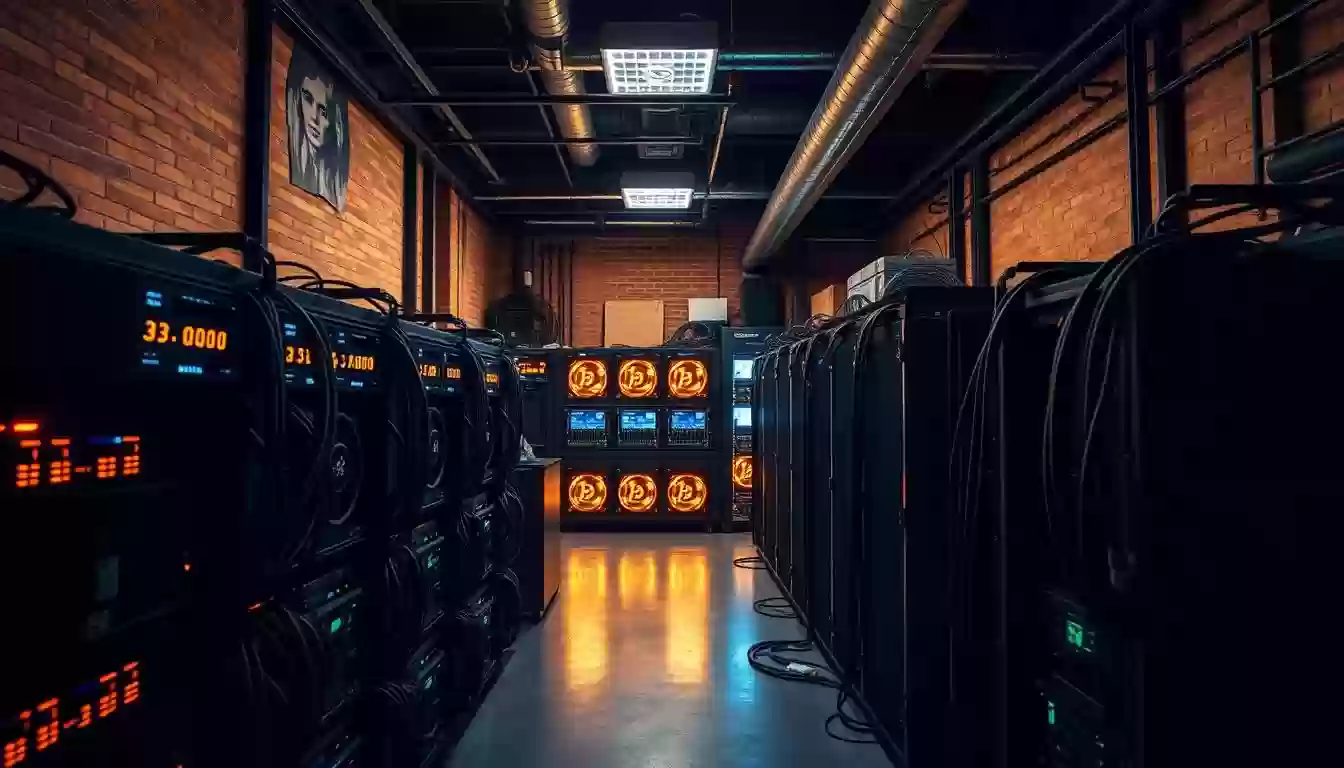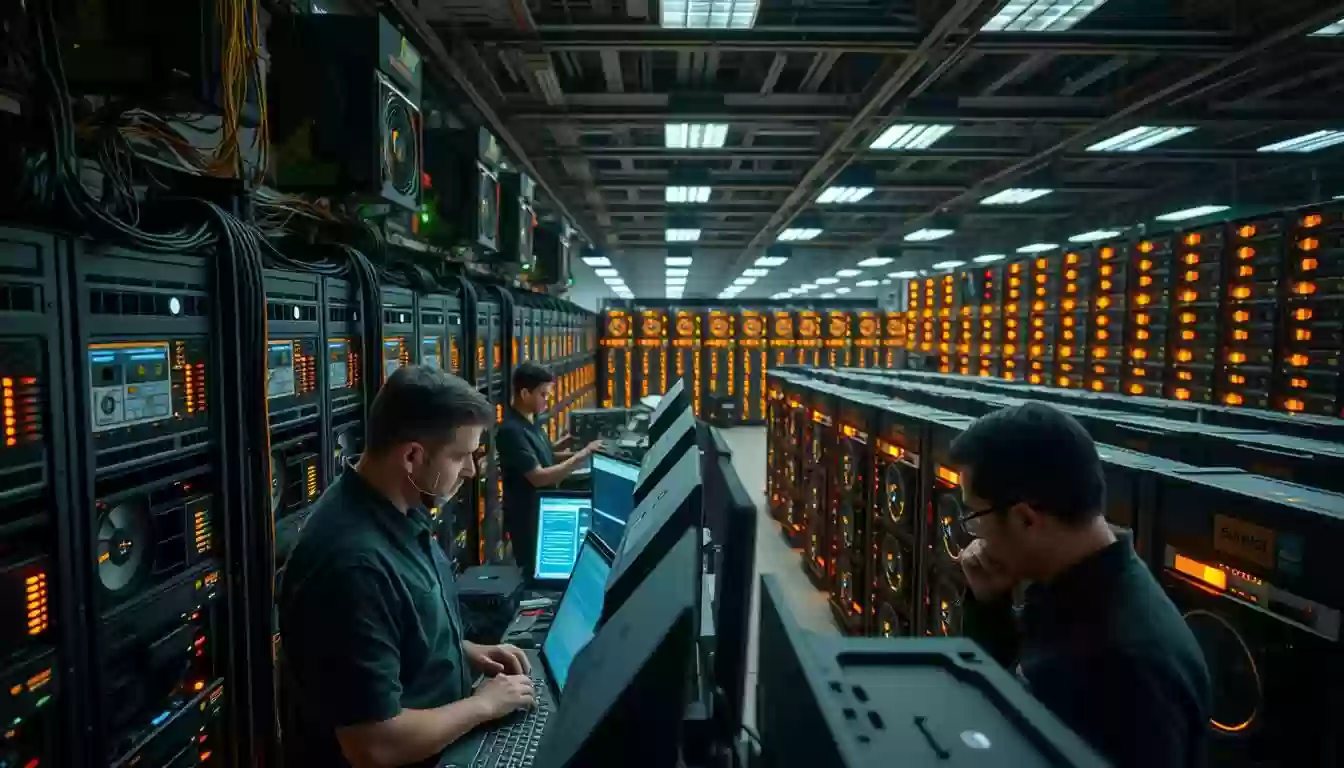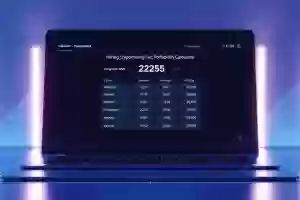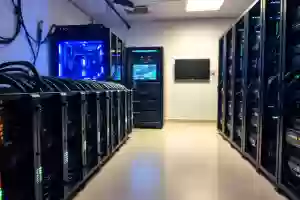How to Start Mining Bitcoin: A Beginner's Guide Updated for 2025
 06 Mar 25
06 Mar 25
Welcome to this comprehensive guide on mining Bitcoin, where we explore the essentials of this dynamic process. Mining is the backbone of the Bitcoin network, enabling the validation of transactions and the minting of new coins. It's a critical component of the blockchain, ensuring security and transparency in the cryptocurrency ecosystem.
In this article, we'll delve into the fundamentals of mining, covering the cost, price, and value considerations. Whether you're a novice or have some experience, this guide offers a step-by-step approach, supported by insights from industry experts.
By the end of this guide, you'll be equipped with the knowledge to make informed decisions about your mining journey. Let's embark on this educational journey together and uncover the opportunities within the Bitcoin network.
Introduction to Bitcoin Mining
Bitcoin mining is the process that powers the Bitcoin network, a decentralized system that records transactions across a public ledger known as the blockchain. This process is essential for introducing new bitcoins into circulation and maintaining the security of the network.
Defining Bitcoin Mining and Its Importance
Bitcoin mining is defined as the process of solving complex cryptographic puzzles to validate transactions and create new blocks in the blockchain. Each block contains a list of transactions, and miners compete to solve these puzzles using powerful computers. The first miner to solve the puzzle gets to add the block to the blockchain and is rewarded with newly minted bitcoins.
Overview of the Blockchain and Proof-of-Work
The blockchain is a decentralized ledger that records all Bitcoin transactions. The proof-of-work mechanism requires miners to perform intensive computations to validate transactions and create new blocks. This process ensures the security and integrity of the network by making it difficult for malicious actors to alter the blockchain.
The mining process involves solving cryptographic hash functions, which are mathematical puzzles that require significant computational power. Miners use specialized hardware to perform these calculations, and the miner who successfully solves the puzzle first is rewarded with bitcoins.
The decentralized nature of the Bitcoin network relies on miners to validate transactions and maintain the integrity of the blockchain. Without miners, the network would be vulnerable to attacks and would not be able to function securely.
Understanding the Mining Process
The mining process is at the heart of the Bitcoin network, enabling the creation of new blocks and the validation of transactions. This process is fueled by complex cryptographic puzzles that miners solve using powerful computers.
The Role of Hashing and Cryptographic Puzzles
Miners use cryptographic hashing to solve complex mathematical problems. Each block contains a unique hash, and miners compete to find a hash with a specific number of leading zeros. The miner who succeeds gets to add the block to the blockchain and is rewarded with newly minted bitcoins.
How New Blocks and Block Rewards Work
A new block is added to the blockchain approximately every 10 minutes. The block reward, currently 3.125 BTC, incentivizes miners to secure the network. This reward halves every 4 years, reducing the supply of new bitcoins over time.
| Component | Details |
|---|---|
| Hash Rate | Measures computational power, impacting mining efficiency. |
| Block Reward | 3.125 BTC per block, decreasing over time. |
| Difficulty | Adjusts every 2 weeks based on network hash rate. |
Miners face increasing difficulty as more participants join, making the process more competitive. This ensures the network's security and integrity.
How to Start Mining Bitcoin
Embarking on your Bitcoin mining journey begins with understanding the process and the factors that influence success. Mining requires time, computational power, and a clear strategy. Let's break down the essential steps to help you get started.
Key Steps to Begin Your Mining Journey
First, it's crucial to understand the mining process. This involves solving complex mathematical puzzles to validate transactions and create new blocks in the blockchain. Each block requires a unique hash, and miners compete to find one with the required number of leading zeros.
The next step is choosing the right hardware. ASIC miners are the most efficient option, offering high hash rates with varying power consumption. For example, the Bitmain Antminer S21 Pro offers a hash rate of 234 TH/s while consuming 3,510W of power. Similarly, the MicroBT Whatsminer M66S provides 298 TH/s but uses more power at 5,513W.
After selecting your hardware, you'll need to configure your mining software. Popular options include CGminer and BFGminer, which allow you to set up your miner, input pool details, and monitor performance. Joining a mining pool is also recommended, as it increases your chances of solving blocks and earning rewards consistently.
Finally, consider the time and resources required. Mining is a competitive process, and solo mining can take years to yield results. By understanding the process, selecting the right equipment, and joining a pool, you can set up a secure and efficient mining operation.
Essential Mining Components and Requirements
Setting up a successful mining operation requires careful consideration of several key components. These include the right hardware, a secure cryptocurrency wallet, compatible mining software, and a reliable power supply. Each element plays a crucial role in ensuring efficiency and profitability.
Cryptocurrency Wallets and Security Considerations
A secure digital wallet is vital for storing and managing your mined bitcoins. Hardware wallets, like Ledger or Trezor, offer robust security features to protect your assets from unauthorized access. Additionally, enabling two-factor authentication and using strong, unique passwords can further safeguard your funds. Security is paramount in the cryptocurrency space, and investing in reliable measures ensures your operation remains safe.
Mining Software and Operating System Compatibility
Choosing the right mining software is essential for optimal performance. Popular options like CGminer and BFGminer are compatible with various operating systems, including Windows, macOS, and Linux. Ensuring your software works seamlessly with your OS is critical for smooth operation. Moreover, regular updates and maintenance of your system help maintain peak performance and security.
Power and electricity demands are significant factors in mining. High-performance hardware consumes substantial power, which can lead to increased electricity costs. Selecting energy-efficient equipment and optimizing your setup can help mitigate these expenses. Understanding the balance between power consumption and system performance is key to maintaining a profitable mining operation.
Choosing the Right Mining Hardware
Selecting the appropriate hardware is a critical decision for any mining operation. The choice between ASIC miners and GPU rigs significantly impacts efficiency, cost, and overall profitability. Understanding the differences and aligning them with your goals is essential for success in the mining space.
ASIC Miners vs. GPU Rigs
ASIC (Application-Specific Integrated Circuit) miners are designed specifically for mining, offering superior performance and efficiency. The Bitmain Antminer S21 Pro, for instance, delivers a hash rate of 234 TH/s while consuming 3,510W of power, making it a powerful choice for serious miners. In contrast, GPU rigs, such as the NVIDIA RTX 3090 with a hash rate of 120 MH/s, are more versatile but less efficient for mining purposes.
Performance, Price, and Power Consumption
When evaluating hardware, consider performance, price, and power consumption. ASICs like the MicroBT Whatsminer M66S offer a hash rate of 298 TH/s but consume 5,513W, highlighting the trade-off between power and performance. GPUs, while less powerful, may be more cost-effective for certain operations. Balance is key; higher hash rates often come with increased electricity costs, which can affect profitability.
Hardware choice directly influences mining efficiency and profitability. ASICs generally offer better efficiency and higher hash rates, making them preferable for large-scale operations. However, GPUs can be more affordable and flexible for smaller setups or diverse mining needs. Consider your budget, electricity costs, and long-term goals when deciding between these options.
Joining a Mining Pool
Collaborative mining through a mining pool offers a structured approach for miners to combine their computational resources. This method enhances the likelihood of solving complex cryptographic puzzles and earning consistent rewards. By pooling resources, participants share both the efforts and the rewards, making it a popular choice for those seeking steady income in the Bitcoin network.
Benefits of Collaborative Mining
Joining a mining pool provides several advantages. First, it allows miners to combine their hash rates, increasing the chances of successfully mining a block. This collaboration reduces the variability in income, offering more consistent rewards compared to solo mining. Additionally, pools handle many administrative tasks, such as network connectivity and block validation, simplifying the process for participants.
Evaluating Mining Pool Options and Risks
When selecting a mining pool, it's important to consider several factors. Look for pools with a strong track record, transparent operations, and robust security features like two-factor authentication. Fees typically range from 1% to 3%, which can impact overall profitability. Payout structures vary, with methods such as Pay-Per-Share (PPS) and Full Pay-Per-Share (FPPS) offering different benefits and risks.
| Pool | Fees | Payout Method |
|---|---|---|
| F2Pool | 4.80% | PPS |
| BTC.com | 4.27% | FPPS |
| Poolin | 5.01% | PPLNS |
Established pools like F2Pool and BTC.com offer reliability and diverse payout options. Always evaluate a pool's credibility and network stability before committing to ensure a secure and profitable mining experience.

Cost and Profitability Considerations
Understanding the costs involved in mining is crucial for determining profitability. The two main expenses are electricity and equipment, which vary based on the type of hardware and location.
Calculating Electricity and Equipment Expenses
Electricity costs can be significant, depending on where you are. For example, in regions with lower electricity rates like Iceland, costs might be around $0.08 per kWh, while in the US, it could be $0.12 per kWh. High-end mining equipment can range from $5,000 to $10,000 or more, with specific models offering different hash rates and power consumption levels.
| Component | Details |
|---|---|
| Electricity | Affects operational costs significantly; cheaper in some regions. |
| Equipment | Varies widely based on model and efficiency. |
| Mining Pool Fees | Typically between 1-3%, impacting overall returns. |
Mining pools can help reduce individual costs by sharing resources and rewards, making mining more accessible and potentially profitable. By comparing these costs to expected rewards over time, miners can make informed decisions to optimize their operations effectively.
Step-by-Step Setup of Your Mining Rig
Setting up a mining rig requires careful planning and attention to detail. Whether you're using ASICs or GPUs, the right configuration ensures efficiency and performance. Let's walk through the process step by step.
Assembly and Configuration Tips
Begin by unboxing and inventorying your hardware components. Ensure all pieces are included and undamaged. Next, assemble the frame and install the mining devices, leaving enough space for airflow.
| Component | Details |
|---|---|
| ASIC/GPU | Core component for processing power. |
| Power Supply | Provides sufficient power to all components. |
| Motherboard | Connects and controls all hardware. |
| Cooling System | Maintains optimal operating temperatures. |
Connect the power supply and configure the motherboard settings. Install mining software and join a pool. Optimize settings for performance and monitor operations regularly. For more detailed guidance, visit this resource.
Mining Software Tools and Utilities
Efficient mining software is essential for optimizing your mining operation. These tools not only enhance performance but also simplify the process, making it more accessible for miners of all levels.
Popular Mining Applications and Features
Leading software like CGminer and BFGminer offer robust features tailored for mining efficiency. These applications support multiple algorithms and provide advanced hash rate optimization, ensuring better performance and higher yields.
| Software | Compatibility | Key Features |
|---|---|---|
| CGminer | Windows, macOS, Linux | Multi-algorithm support, advanced monitoring |
| BFGminer | Windows, Linux | Customizable settings, pool support |
| Awesome Miner | Windows | Remote management, 24/7 monitoring |
When choosing software, consider factors like reliability, user interface, and technical support. Tools with intuitive dashboards and cross-platform compatibility are ideal for seamless operations. By leveraging these utilities, miners can maximize their hash rates and streamline their workflow, leading to a more efficient and profitable mining experience.
Security Measures for Your Mining Operation
Securing your mining operation is crucial to protect your investments and ensure uninterrupted performance. A compromised system can lead to significant financial losses and expose your network to vulnerabilities. Let’s explore the essential steps to safeguard your mining setup.
Protecting Your Hardware and Wallet
Physical security is the first line of defense. Store your mining equipment in a secure location to prevent theft or tampering. Regularly inspect your hardware for any unauthorized modifications. For your cryptocurrency wallet, opt for cold storage solutions like hardware wallets, which are less vulnerable to cyber-attacks. Enable multi-factor authentication to add an extra layer of security.

Network security is equally important. Use a reliable VPN and dedicate a router specifically for your mining operation to minimize risks. Regularly update your software and firmware to protect against the latest threats. Educate yourself and your team about phishing attacks and other common threats to avoid falling victim to scams.
By implementing these measures, you can significantly enhance the security of your mining operation, protecting both your hardware and digital assets. A secure setup ensures your block rewards are safe and your network remains intact.
Technical Deep Dive: Mining Difficulty and Hash Rate
Mining difficulty and hash rate are two critical factors that shape the Bitcoin network's operation. Understanding their dynamics is essential for miners to optimize their strategies and maintain profitability.
Adjusting to Changing Network Conditions
Mining difficulty refers to the computational effort required to solve the cryptographic puzzles needed to validate transactions and create new blocks. It is calculated based on the network's total hash rate, which is the combined computational power of all miners. The higher the hash rate, the greater the difficulty, as the network adjusts to maintain a consistent block creation time of approximately 10 minutes.
Impact on Mining Efficiency
The relationship between mining difficulty and hash rate directly affects mining efficiency. As more miners join the network, the hash rate increases, leading to higher difficulty levels. This adjustment ensures the network's security and stability. For instance, a minor increase in hash rate can significantly raise the difficulty, making it harder for individual miners to solve blocks and earn rewards. Conversely, a decrease in hash rate can lower difficulty, potentially increasing mining efficiency for those still active on the network.
| Component | Details |
|---|---|
| Hash Rate | A measure of computational power, impacting mining efficiency. |
| Mining Difficulty | Adjusts every two weeks to maintain consistent block times. |
| Block Time | Aim to maintain approximately 10 minutes per block. |
Maintaining a stable rate of "work" is crucial for long-term profitability. As the network adjusts difficulty levels, miners must adapt their strategies to remain competitive. This includes upgrading hardware, joining mining pools, and optimizing energy consumption. By understanding and responding to these network conditions, miners can enhance their efficiency and profitability in the ever-evolving Bitcoin ecosystem.
Understanding Block Rewards and Bitcoin Halving
Block rewards are a critical component of the Bitcoin network, serving as the primary incentive for miners to validate transactions and create new blocks. These rewards are designed to decrease over time, a process known as halving, to control inflation and preserve the value of Bitcoin.
Overview of Reward Reduction Over Time
The Bitcoin halving occurs approximately every four years, reducing the block reward by 50%. This scheduled reduction has historical significance, with the first halving in 2012 lowering the reward from 50 BTC to 25 BTC. Subsequent halvings in 2016 and 2020 further reduced it to 12.5 BTC and 6.25 BTC, respectively. The next halving is expected in 2024, dropping the reward to 3.125 BTC.
| Halving Event | Date | Block Reward |
|---|---|---|
| First Halving | November 28, 2012 | 25 BTC |
| Second Halving | July 9, 2016 | 12.5 BTC |
| Third Halving | May 11, 2020 | 6.25 BTC |
| Fourth Halving | April 2024 | 3.125 BTC |
The reduction in block rewards impacts mining profitability, pushing miners to seek efficiency or join pools. Historically, halving events have preceded price increases due to reduced supply. By 2140, the last Bitcoin is expected to be mined, with miners relying on transaction fees.
Environmental and Energy Considerations
Bitcoin mining has sparked significant discussions about its environmental impact, particularly regarding electricity consumption. As the network grows, so does its power demands, raising concerns about sustainability and energy efficiency.
Assessing the Carbon Footprint of Mining
Recent studies reveal that Bitcoin mining consumes as much electricity as some small nations. For instance, the global mining of Bitcoin uses more energy than Pakistan, which has a population of over 230 million. This substantial power consumption contributes to a notable carbon footprint, making it a focal point for environmental debates.
Innovations for Energy Efficiency
The industry is responding with innovative solutions to reduce power consumption. Many mining operations now utilize renewable energy sources like hydroelectric, solar, and wind power. Some companies are even investing in solar farms and wind turbines to ensure a steady supply of clean energy. Additionally, advancements in mining hardware have improved energy efficiency, helping to mitigate environmental concerns.
| Energy Source | Percentage of Use | Environmental Impact |
|---|---|---|
| Hydroelectric | 60% | Low |
| Solar | 20% | Very Low |
| Wind | 10% | Low |
| Fossil Fuels | 10% | High |
These innovations highlight the industry's commitment to sustainability. By adopting renewable energy and efficient technologies, Bitcoin mining is moving towards a more environmentally friendly future.
Future Trends in Bitcoin Mining and Conclusion
As we conclude this guide, it's clear that Bitcoin mining is a dynamic and evolving field. The process has come a long way since its inception, and the future looks promising with advancements in technology and changes in regulations.
Technological Advances and Equipment Upgrades
The mining industry is on the brink of significant technological advancements. New hardware designs are expected to enhance efficiency and reduce energy consumption. For instance, next-generation ASICs could offer higher hash rates while using less power, making mining more accessible and sustainable. Additionally, improvements in mining algorithms may further streamline the process, allowing miners to operate more effectively.
Regulatory and Economic Outlook
Regulatory changes are likely to play a crucial role in shaping the future of mining. Governments worldwide are considering stricter guidelines, which could impact operational costs and accessibility. Economically, the balance between mining rewards and increasing difficulty levels will be a key factor. As the network adjusts, miners will need to adapt their strategies to remain profitable.
In conclusion, while challenges like rising difficulty and regulatory scrutiny loom, the potential rewards remain substantial. By staying informed and adapting to changes, miners can navigate this evolving landscape successfully. Embracing new technologies and maintaining a focus on efficiency will be essential for long-term success in the Bitcoin mining space.
FAQ
What is a mining pool and why is it important?
A mining pool combines the computational power of multiple miners to increase the chances of solving complex mathematical problems and earning block rewards. It allows participants to share resources and rewards, making mining more accessible and efficient for individuals.
How does mining difficulty affect the network?
Mining difficulty adjusts every 2016 blocks to maintain a consistent block time of approximately 10 minutes. Higher difficulty means the network requires more computational power to find a new block, ensuring security and stability as more miners join.
What is the role of hash rate in mining?
Hash rate measures a miner's computational power, typically in hashes per second. A higher hash rate increases the chances of solving the cryptographic puzzle first and earning the block reward, contributing to the network's security and transaction verification.
What factors influence the profitability of mining?
Profitability depends on factors like electricity costs, hardware efficiency, mining difficulty, and the current price of Bitcoin. Miners must balance these elements to ensure their operations remain cost-effective and sustainable.
How does blockchain security rely on mining?
Mining secures the blockchain by validating transactions and creating new blocks through proof-of-work. This process makes it computationally infeasible for malicious actors to alter the blockchain, ensuring data integrity and network trust.
What is the significance of block rewards in mining?
Block rewards incentivize miners to secure the network by rewarding them with newly minted Bitcoin and transaction fees. This mechanism aligns the interests of miners with the network's security and growth.
How has mining hardware evolved over time?
Mining hardware has transitioned from CPUs to GPUs and now ASICs (Application-Specific Integrated Circuits), which are highly efficient and specialized for Bitcoin mining. This evolution has significantly increased hashing power and energy efficiency.
What are the environmental concerns surrounding mining?
Mining consumes substantial electricity, often leading to concerns about carbon emissions. However, the industry is shifting towards renewable energy sources and more efficient technologies to mitigate its environmental impact.
How can one ensure mining operation security?
Securing your mining operation involves using strong passwords, enabling two-factor authentication, regularly updating software, and protecting hardware from physical tampering. These measures help safeguard against unauthorized access and theft.
What trends are expected in the future of mining?
The future of mining may see increased adoption of renewable energy, improved hardware efficiency, and regulatory developments. These trends aim to enhance sustainability and accessibility while maintaining network security and decentralization.





























